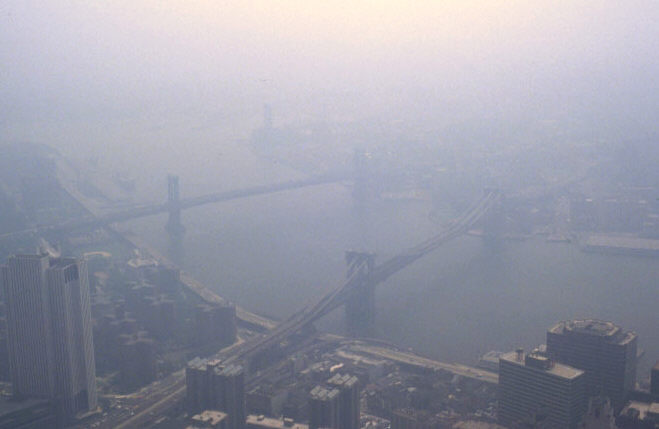The first major emission controls on motor vehicles were introduced in 1975 with the advent of the catalytic converter.
Today's cars emit less than 1 percent of the three "criteria" pollutants that came out of their tailpipes half a century ago.
They emit relatively so little carbon monoxide, nitrogen oxides, and hydrocarbons that the collective effect of vehicle emission in the U.S. may now be outweighed by ... household products?
DON'T MISS: Fossil fuels only part of human carbon emissions; land use, deforestation matter too
That's the startling conclusion of a new study issued in mid-February by a team of university and government scientists.
"The sources of air pollution are becoming more diverse" as vehicle emissions have declined, according to lead scientist Brian McDonald of the University of Colorado at Boulder, as cited by The Washington Post at the time the study was published in Science.
The team's study focused on volatile organic compounds, or VOCs, petroleum-based products that contribute to the formation of ozone and possibly small airborne particulates.

Chrome exhaust pipe
The resulting study suggested that the effects of a diverse group of sources have not properly been accounted for in estimating overall VOC emissions.
Those sources include multiple industrial and consumer products; the study specifically mentions “pesticides, coatings, printing inks, adhesives, cleaning agents, and personal-care products” as key sources.
How can a person tell if a given product is emitting VOCs?
CHECK OUT: A Brief History Of Smog in California, Which Led To Electric Cars
That's simple, said Chris Cappa of the University of California—Davis, another member of the research group: It has a smell.
Perfumes, colognes, scented cleaning products, and many other substances emit a scent into indoor air that ultimately dissipates and makes its way outdoors.
There, the effect of sunlight can cause it to combine with other airborne substances and react to form other compounds that contribute to photochemical smog.

Smog in New York City
Within a day of the study's publication, the U.S. cleaning-products industry group challenged the study, noting that many of its substances were used in water rather than emitted into the atmosphere—as the study noted.
Other scientists praised the study, however, calling it an important advance in understanding the sources and causes of air pollution.
Catalytic converters have now spread through the vast majority of the almost 100 million vehicles produced globally each year, greatly lessening the health effects of the "criteria pollution" substances (CO, HC, NOx).
The Volkswagen diesel scandal exposed the challenges and high costs to carmakers of reducing exhaust emissions from diesel engines, especially nitrogen oxides that contribute to smog formation.
Plug-in electric cars vary in their contributions to smog-forming emissions, depending on the sources used to recharge their batteries, though as renewable energy continues to fall in cost and electric grids slowly decarbonize all over the world, every plug-in vehicle will get incrementally cleaner.
Now the battle has turned from criteria emissions to emissions of carbon dioxide, the greenhouse gas whose emissions over the last 100 to 150 years of Industrial-Age human activity have contributed to climate change and extreme weather patterns.
![EPA administrator Scott Pruitt [photo from 2014] EPA administrator Scott Pruitt [photo from 2014]](https://images.hgmsites.net/lrg/oklahoma-attorney-general-scott-pruitt-2014_100584650_l.jpg)
EPA administrator Scott Pruitt [photo from 2014]
As it did in the 1950s and 1960s on tailpipe emissions, California has been a world leader in studying, identifying, and regulating emissions of carbon dioxide from motor vehicles.
The Trump Administration is currently studying whether to overturn the linked emission limits and fuel-economy requirements for vehicles in model years 2022 through 2025 that continue to reduce CO2 emissions.
A decision on those issues is anticipated by March 30.













